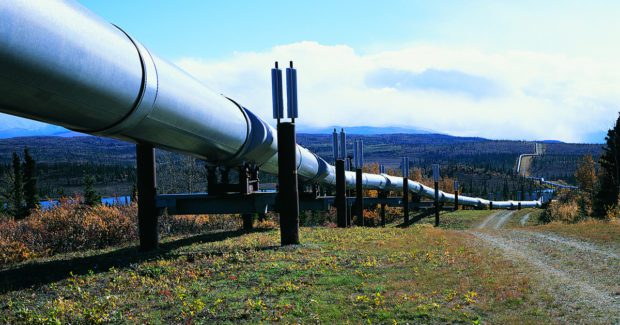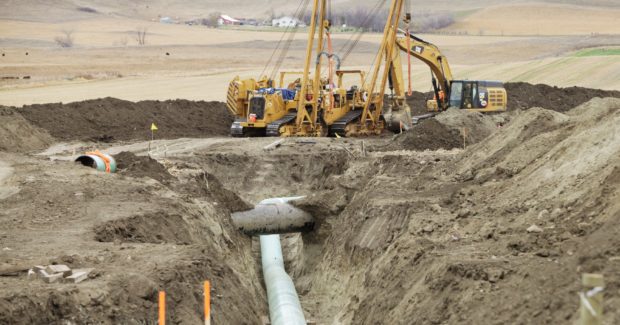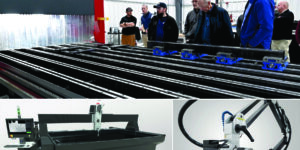Pipeline Payoffs
Increasing consumption of oil and gas resources is opening a pipeline of new opportunities for oilfield services companies and their parts suppliers that manufacture, repair and maintain the equipment used in setting up oil and gas wells, oil extraction and transport.
Posted: January 19, 2018
The quiet revolution of increasing shale gas production is driving technological advancements in oil and gas exploration that are expected to further expand the $102.1 billion oilfield services market to $127.3 billion by 2022, a healthy growth rate of 3.8 percent between 2017 and 2022.1 This is great news for oilfield service companies and their parts suppliers that manufacture, repair and maintain equipment used in setting up oil and gas wells, oil extraction and transport. These companies also help in good logging (performed in boreholes drilled for the oil and gas), perforation, zonal isolation, well stimulation, sand washing and setting tubing plugs. Their services and equipment are critical for the upstream sector and account for a large share of oil and gas companies’ spending. Increasing consumption of oil and gas resources will open new avenues of opportunities for oilfield services companies and their parts suppliers over this period as government and private sectors across the globe invest in more exploration and production of oil and gas to meet the demands of the population.1
One example of these new avenues is the new $3.8 billion Dakota Access Pipeline, which marked six months of operations on New Year’s Day and is providing North Dakota with major payoffs. The pipeline has significantly lowered energy transportation costs and increased profits for energy companies that move their oil to the Gulf Coast where it fetches a higher price. The result: energy production has surged since the Dakota Access Pipeline opened.2 Between September and October alone, oil production grew by 78,000 barrels a day, the biggest month-over-month increase North Dakota has ever seen. The state peaked at around 1.185 million barrels a day that month – 135,000 barrels more than they produced daily before the pipeline was operational. Compared with January 2017, North Dakota has an additional 15 drilling rigs currently in operation.2
Increased oil production has resulted in job growth in North Dakota, where unemployment was 2.3 percent in November and more than 850 existing wells need fracking crews. State revenue rose by about $43.5 million in the first five months the pipeline was operational. And solely because of the Dakota Access Pipeline, the state is on track for $210 million to $250 million in additional tax revenue by the end of this biennial budget period.2 The pipeline has also reduced oil-train traffic within the state: the last time oil production was this high, North Dakota saw as many as 12 trains (or 1,200 cars) pass through daily. Now only two trains pass through – a victory for the environment and public safety, given that oil-spill accidents occur with much greater frequency on railways than in pipelines.2
References
- “Oilfield Services Market Share Will Reach $127.31 Billion by 2022,” Zion Market Research, November 21, 2017. Retrieved from https://globenewswire.com.
- “North Dakota’s Pipeline Payoff,” Review & Outlook, The Wall Street Journal, December 30, 2017. Retrieved from www.wsj.com.
- “North American Rig Counts,” James L. Williams, WTRG Economics, January 6, 2018. Retrieved from www.wtrg.com/rotaryrigs.html.
Beyond North Dakota, the expansion of oilfield services in the U.S. ripples through the 924 rotary drilling rigs that were operating during the first week of January 2018 – an increase of 259 rigs over last year.3 Of these, the number of rotary rigs drilling for oil was 742, which is 213 more rigs targeting oil than last year and 80.3 percent of all drilling activity. The 182 rigs that target natural gas is an increase of 47 rigs over last year. Year-over-year oil exploration in the U.S. is up 40.3 percent. Gas exploration is up 34.8 percent. Overall, there are 1,098 rotary drilling rigs now targeting oil and gas throughout North America, an increase of 228 rigs over last year.3
Welding shops that supply parts and assemblies for the field machinery equipment, drilling equipment, pumps and valves, well-surveying machinery and other equipment used in these oilfield services operations see all of these trends as big opportunities to grow their business. To help them stay competitive on job bidding, here is some of the latest welding equipment that can improve their productivity and help save them more time and labor:
Welding Equipment for Shop and Field Work in Offshore Yards
The Renegade ET 300iP inverter for DC TIG, pulsed TIG and Stick welding from ESAB weighs 37 lb, produces a top output of 300 amps at 40 percent duty cycle and offers primary power flexibility. They also offer the Rebel EMP 285ic multiprocess welder for MIG, Flux-Cored, DC Stick and TIG welding.
Welding Equipment for Pipe and Tube Fabrication on the Jobsite
The Dynasty 280 DX with CV from Miller Electric includes Auto-Line technology and can TIG weld 0.012 in to 3/8 in aluminum and 0.004 in to 3/8 in steel with superior arc performance. It can TIG weld with AC waveforms, including advanced squarewave, soft squarewave, sine wave and triangular wave.
Fume Extraction Gun for Large Weldments, Confined Spaces
The 300 amp Clean Air Fume Extraction MIG gun from Bernard reduces smoke at the source with a small vacuum chamber that provides good joint access and visibility, along with a 360 deg vacuum hose swivel on the rear of the handle for improved flexibility that reduces operator wrist fatigue.
How to Regain up to 95 Percent of Lost Productivity for Tip Changes
TOUGH LOCK HDP Contact Tips from Tregaskiss last six times to ten times longer than copper and chrome zirconium tips that often need to be replaced twice as frequently during pulsed MIG welding due to its high heat input.
Weld Purging of Pipes for Oil and Gas Operations
QuickPurge Systems from COB Industries remove the need to fill complete pipes with an inert gas, reduce the space to be purged, and cut purging time dramatically for huge savings in time and gas costs.
















